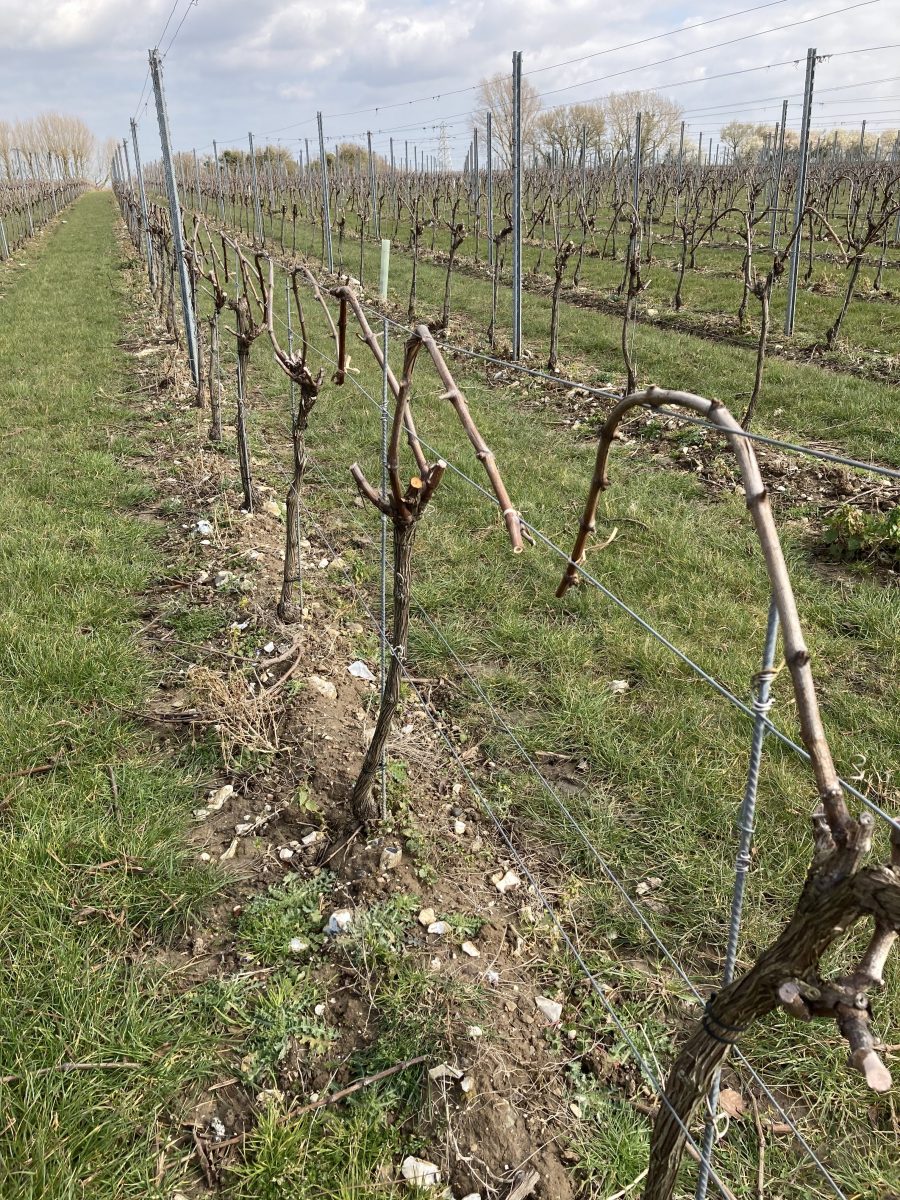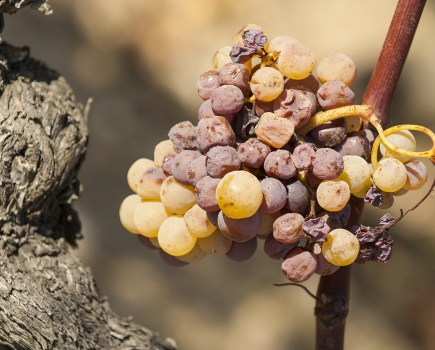The Pendelbogen system of arching canes offers several benefits for sap flow, vine management and frost mitigation. Hutchinsons agronomists Rob Saunders and Chris Cooper explain why…
Increasing yields while culturally reducing frost damage are two important priorities for growers, and the way vines are pruned and trained plays a significant part in this.
Many approaches to training vines are used worldwide, but the most popular in the UK is the Vertical Shoot Position (aka Guyot) system.
Tying canes down flat onto the fruiting wire has traditionally been the standard approach, favoured for its simplicity and ease of management. There are however, inherent risks with this method, not least from the increased likelihood of more significant frost damage occurring to any buds in contact with the galvanised wire, which conducts cold along its length.
Laying canes flat also encourages the inherent apical dominance of the vine’s distal bud, prompting it to burst into leaf earlier than other buds, potentially resulting in uneven crop development throughout the season.
Indeed, before vines were cultivated by humans, they evolved to be freeloaders, climbing over trees and shrubs to get leaves into sunlight, without investing valuable carbohydrates into fully structural trunks and stems.
This evolutionary pressure accentuated a trait called acrotony, defined as increased vigour of the branches arising from dormant buds according to their position on the stem, progressing from the proximal (close to the main stem) to the distal (furthest away from the main stem).
The effect of pronounced acrotony is that the final bud on a cane is usually the most vigorous and first to break, leading to uneven cane growth and ripening.
Bowing canes
Tying canes flat to the fruiting wire does little to balance the vigour of buds along the cane, but arching them can help reduce apical dominance, promote more even sap distribution and improve the evenness of bud burst along its length, while potentially reducing frost risk.
A variation of the Guyot system was developed in Germany, named ‘Pendelbogen’ which literally translates as ‘pendulous bow’. This is descriptive of the final effect, where arching canes in a double Guyot resembles a McDonalds ‘M’.
This is most often achieved by installing a second fruiting wire around 10cm above the first, arching the cane over the upper wire and attaching the end to the lower. This is quick to do, provides a well secured, stable cane with three attachment points, and is easier to pull out at the end of the season than would be the case where canes are wound around a flat fruiting wire.
There is a narrow window of opportunity to install the second fruiting wire, however, which lies after pruning is complete, but while canes are still pliable, and most importantly before buds start to swell and become susceptible to damage.
Benefits of bowing canes
There are four main benefits to bowing canes:
- Reduce risk of frost damage associated with a cane tied or wound around a single wire
- Overcome acrotony, leading to more even bud break
- Increase the total length of cane laid down by around 20%, and with it, additional buds, so the approach is particularly suited to vigorous sites and varieties
- Increase the depth of the fruiting zone from top to bottom, from say 30cm to 40cm, which should benefit overall yield potential, providing growers manage crops appropriately through to harvest.
The disadvantages are that with greater bud numbers, canopy management becomes more critical and for varieties such as Siegerrebe, or situations where the internodal distances are small, a second fruiting wire will be more of a hinderance than an advantage.
Pruning basics
Finally, for those with vines still to prune over the next few weeks, it is worth remembering the basics, such as trying to avoid pruning in wet weather, when the risk of grapevine trunk disease infection is greater.
Pruning when sap starts to run in February and March may help reduce wounds suffering from GTD infections, but where large cuts (>25 mm) are needed, if re-structuring, it is beneficial to apply a wound protectant.
When planning the amount of cane to leave, it is generally better to be conservative when removing material. We all remember the frosts of 2020, so this may mean allowing more buds, and adopting cultural methods to delay bud burst, plus mitigating frost damage through methods such as leaving sacrificial canes, or delaying tying down, especially on frost-prone sites.
Sort out any natural frost drainage before bud burst begins too. As the saying goes, plan for the worst and hope for the best.




